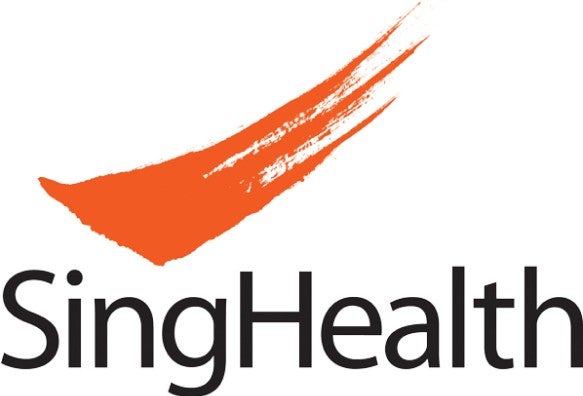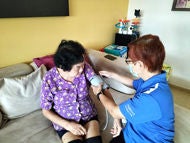What is - Surgical Termination of Pregnancy
What is surgical termination of pregnancy (TOP)?
Surgical TOP is a surgical procedure to remove a pregnancy from the womb through the cervix and vagina. This is done under anaesthesia.
What does surgical TOP involve?
Mandatory TOP counselling
You will need to attend a mandatory counselling before the TOP. A 48-hour cooling off period is required by the Singapore law before the TOP is performed.
What does it involve?
Surgical TOP involves a minor operation. There are two types of surgical TOP: vacuum aspiration and dilatation and evacuation. An ultrasound scan is also performed at the same time to reduce the risk of complications and make sure that all the pregnancy tissues are removed.
- Vacuum aspiration can be done under local anaesthesia (an injection to numb the cervix) or general anaesthesia (where you are asleep). The cervix (neck of the womb) is widened (dilated) and the pregnancy tissues are removed from the womb using a gentle suction.
For pregnancies up to 10 weeks gestation, the procedure can be done under local anaesthesia in the outpatient clinic, while you are awake, hence avoiding the need for a general anaesthesia. However, this can also be done under general anaesthesia in the operating theatre for up to 12 weeks gestation as some women may prefer to undergo the procedure under general anaesthesia.
- Dilatation and Evacuation (D&E) can be done under regional anaesthesia (an injection to numb a part of the body, in this case, waist down with you being awake) or general anaesthesia. The cervix is dilated, and the pregnancy tissues are removed in pieces using special forceps and vacuum suction. This procedure is performed after 12 weeks gestation.
What are the risks involved?
Anaesthesia
In general, the risk for anaesthesia is very low for a young, fit and healthy woman undergoing minor surgical procedures. Your anaesthetist will explain the choice of anaesthesia and its risks with you.
Procedure/surgery
These procedures are considered a minor surgery and usually completed in less than half an hour. It is generally a safe procedure. However, complications can still happen. The risks include:
- Vaginal bleeding
You can expect to experience minor vaginal bleeding, and this may last for 8-10 days. Excessive vaginal bleeding occurs in around 1 in 1000 women and blood transfusion may be necessary. The risk increases to 4 in 1000 women when TOP is carried out after 20 weeks of pregnancy. In rare situations, where bleeding cannot be arrested, your womb may need to be removed.
- Infection
Up to 1 in 10 women will get an infection after TOP. You may be screened for infection or given antibiotics to reduce your risk of getting an infection. About 1% of women will still develop pelvic infection and in severe cases, you may need hospitalisation and intravenous antibiotics (through a drip).
- Failure to terminate the pregnancy or retained pregnancy tissues
This happens in less than 1 in 100 women (for pregnancy less than 14 weeks gestation) and up to 3 in 100 women (for pregnancy above 14 weeks gestation). You may require a repeat procedure to remove the pregnancy.
- Uterine perforation
Perforation of the wall of the womb may happen in 4-7 in 1000 women which may require additional surgery to repair the injury. There is also risk of injury to surrounding organs like the bladder or intestines (3 in 1000 women).
- Damage to the cervix
Trauma to the cervix is uncommon, up to 1 in 100 women. Significant trauma may lead to miscarriage or preterm delivery in future pregnancies.
- Menstrual abnormalities/Asherman’s syndrome
Scarring of the womb lining (Asherman’s syndrome) is rare and may lead to menstrual abnormalities and difficulty conceiving in the future.
Pre-Surgery Preparation for Surgical Termination of Pregnancy
How should I prepare for it?
Fasting
If you are getting surgical TOP in the operating theatre under regional or general anaesthesia, you need to fast (no food or drinks) for at least 6 hours before the surgery. You may be asked to fast from 12 midnight on the day of surgery if you are more advanced into your pregnancy.
Preparation of the cervix
This is an important step to soften the cervix and prepare it to make the procedure safer.
For vacuum aspiration procedure, you will be given some tablets (misoprostol) to be placed under your tongue or into the vagina approximately 1-3 hours before the procedure.
For D&E procedure, you will be given a tablet, mifepristone, to swallow approximately 1-2 days before the procedure. About 1-2 hours before the surgery, you will be given some tablets (misoprostol), either by placing them under your tongue or in the vagina.
For pregnancy above 18 weeks, some cervical dilators, called the Dilapan, will be inserted into the cervix on the morning of your surgery. These rods swell over time to gently open up the cervix. Insertion only takes a few minutes. As the Dilapan expands, it can cause some cramping or vaginal spotting.
Feticide
This procedure is carried out in a scan room before the surgical TOP. Under ultrasound guidance, the doctor will administer an injection into the fetal heart to stop the heartbeat. This is only advised if you are at high risk of massive bleeding (e.g. placenta praevia, when the placenta attaches in the lower part of the womb) and above 20-22 weeks of gestation.
Post-Surgery Care for Surgical Termination of Pregnancy
What can I expect after surgery?
Following the procedure / surgery, you will be brought to the recovery area. You will stay there for 1-2 hours. You can go home once you feel well and have been reviewed by the doctor/nurse.
You will need someone to accompany you home. For 24 hours after general anaesthesia, you must not drive a vehicle, drink alcohol, make important decisions (e.g. sign any legal documents) or engage in strenuous exercise or heavy lifting.
You may experience light vaginal bleeding and lower abdominal cramps after the surgery, and this should gradually reduce over the next two weeks.
When should I seek medical attention?
Some symptoms of the risks and complications of surgical TOP can present after you have been discharged from the hospital. If you experience any of the symptoms listed below, you should return to the hospital for medical assessment.
- Excessive vaginal bleeding: If you experience heavy bleeding (TWO pads an hour for TWO consecutive hours)
- Abdominal pain: If you experience severe lower abdominal pain not relieved by painkillers prescribed
- Fever
- Foul-smelling vaginal discharge
- Feeling generally unwell
Surgical Termination of Pregnancy - Other Information
Additional information
- Your doctor will also prescribe additional medication:
- Antibiotics: Taking antibiotics can reduce your risk of getting infection. You should complete the course of antibiotics prescribed to you.
- Painkillers: You will be given some painkillers to be taken as required for the abdominal cramps.
- Cabergoline: You may be prescribed cabergoline tablets to stop breast milk production if your pregnancy is more than 20 weeks gestation.
- You should continue to use sanitary pads (not tampons) until your next period.
- Your doctor will discuss with you about various contraception methods to prevent an unplanned pregnancy. You may refer to the contraceptive leaflet for more information. All contraceptive methods can be started immediately after a surgical TOP.
- A blood test will be done to determine your blood group before the TOP. You may be given an anti-D immunoglobulin injection if you have Rhesus negative blood group. This injection is given within 72 hours of the TOP.
- Some women may experience long-term emotional problems after TOP. This includes feeling of sadness, guilt, or regret. You should talk to your doctor about these feelings.
- Your next period will usually return approximately 4-6 weeks after the TOP.
Schedule
Outpatient Manual Vacuum Aspiration (MVA)
| Date & time |
|
| Where to go |
|
Surgical Vacuum Aspiration for TOP
| Date & time |
|
| Where to go |
|
Surgical Dilatation and Evacuation (D&E)
(For gestation 12+0 to 17+6 weeks)
PART 1: To swallow a tablet called mifepristone.
| Date & time |
|
| Where to go |
|
PART 2: Surgery Day
| Date & time |
|
| Where to go |
|
Surgical Dilatation and Evacuation (D&E)
(For gestation 18+0 to 23+6 weeks)
PART 1: To swallow a tablet called mifepristone.
| Date & time |
|
| Where to go |
|
PART 2: To insert cervical dilator (DILAPAN)
| Date & time |
|
| Where to go |
|
Proceed to Day Surgery Unit after Dilapan insertion.
Treatment locations at SingHealth
KK Women's and Children's Hospital (KKH)
- Urgent O&G Centre (UOGC)
Basement 1, Women’s Tower, KKH - Women’s Hub
Basement 1, Women’s Tower, KKH - Day Surgery Unit
Basement 1, Children’s Tower, KKH - Clinic C
Level 1, Women’s Tower, KKH - Clinic L
Level 1, Children’s Tower, KKH
The information above is also available for download in pdf format.
Contributed by
The information provided is not intended as medical advice. Terms of use. Information provided by SingHealth.
Test and Procedure Available At
Department
Division of Obstetrics & Gynaecology
Get to know our doctors at SingHealth Hospitals in Singapore.
Get to know our doctors at SingHealth Hospitals in Singapore. here.




















